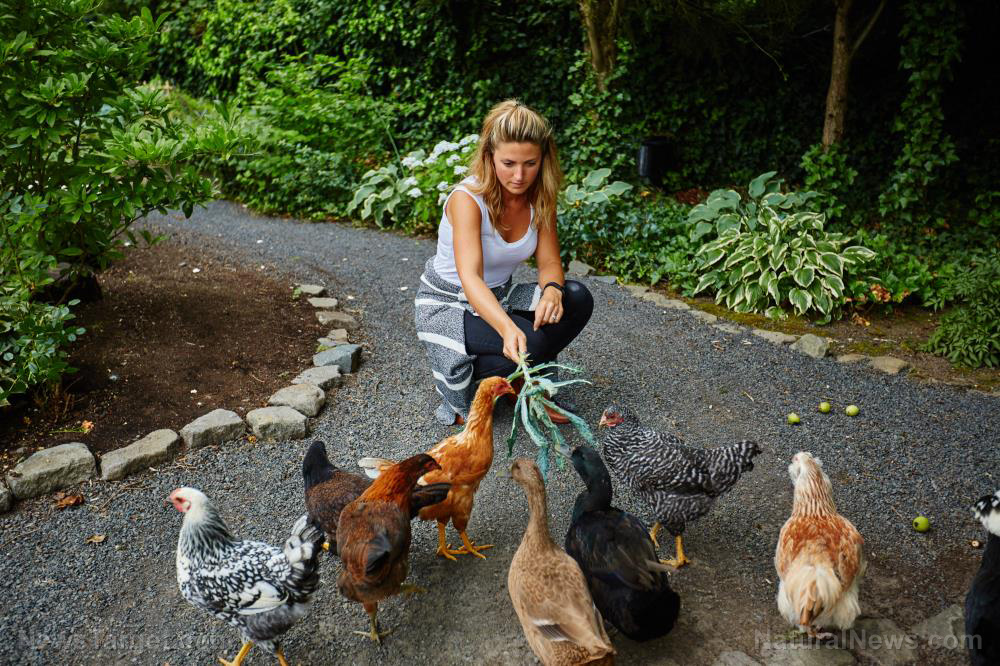
Advertisement
When it comes to raising animals on a homestead, chickens are often the first choice.
Not only are they relatively easy and cheap to procure, they also produce eggs in no time – ensuring a self-replenishing stock of animals that can provide a steady supply of protein for a long time. In addition, chickens, when raised free-range, can help cultivate your farm by aerating the soil with their constant scratching and foraging.
However, a prepper must be prepared to bug out and pack things up fast – especially in the event of a disaster or calamity. This includes basic necessities such as clothes, food and survival gear – as well as animals.
While the packing and transportation of your clothes, equipment and food stocks may be a relatively easy affair, transporting your animals is a far more complicated endeavor.
This is where mobile chicken coops come in.
True to their name, mobile chicken coops, also known as chicken tractors and chicken arks in some areas, are enclosures that are designed to make them easy to transport in case of emergencies – even with the chickens still inside.
There are different styles and sizes of portable chicken coops or tractors that a prepper can build for his birds, such as box or hutch types, A-frames and even modular ones that have extensive runs, or areas where the chickens can peck at exposed grass.
However, despite the differences in the styles and sizes of these structures, it is important to note that a good portable or mobile chicken coop must meet the following requirements:
- At least 1 nesting box
- Enough windows for ventilation
- Enough feeding and drinking trays
Although not necessarily considered as requirements, you can add perches, dust bath boxes and runs, or fenced-in outdoor areas for the birds, if the coop has enough space to allow their installation.
If you are considering making a mobile chicken coop for your birds, here is an overview on how to construct a simple, A frame-style mobile coop, as adapted from The Spruce. (Related: 10 Reasons preppers need chickens in their homestead.)
- Build the bottom frame. Use good 2 x 4 lumber for the bottom frame of this coop, and use metal corner braces and screws to secure the frame pieces together at the joints. Make sure that you choose a size for the bottom frame that creates a good footprint size for the coop. If you want a coop with a surrounding fence, plan on a minimum of 3 square feet of floor space per chicken. A movable coop that is 9 x 8 feet, or 72 square feet, can comfortably house about 24 chickens.
- Build the main frame. Using a table saw, rip 2 x 4s into thinner pieces in order to make the diagonal rafters and the top ridge board of the coop. Make sure you cut proper angles on the ends of the rafters. Assemble the pieces together with deck screws. Add two additional bottom stringers to provide greater stability to the bottom frame. Space the rafters 16 inches apart.
- Build the roosts. Add two additional long pieces of lumber and attach them about 2 feet directly above the floor stringers. These will serve as roost bars for the chickens. A vertical support post supports each roost bar in the center.
- Build nest boxes. An important addition if you’re keeping hens for their eggs, nest boxes can be simple structures lined with a metal hardware cloth on the bottom and attached to the frame of the coop. The sizes of the nest boxes will vary depending on the coop’s available space.
- Make a roof. Roofing materials will depend on many factors, such as your location and the climate. Whatever roofing material you choose, make sure it is installed securely, and that it is watertight. For a basic roof, you can use metal panels that have been cut to fit and secured to the rafters with screws. Adding a V-shaped metal ridge cap at the top will seal it against water. To ensure that the roof is watertight, you can apply caulk to the seams from the inside. Allow the roof to slightly overhang at the ends of the coop to provide additional rain protection.
- Close the ends of the coop. Add wood paneling to both ends of the coop, but leave enough space to facilitate good ventilation.
- Add doors. Use a simple 2 x 2 frame with a diagonal cross brace, which is then covered with chicken wire, for the door. Reinforce the corners of the frame with flat metal braces.
- Add wheels. Install wheels by drilling and inserting carriage bolts through the bottom frame of the coop. Do this for all four corners. These carriage bolts will also function as axles that will hold the utility wheels in place. Remember to use the right wheels for the terrain you’re in: use bigger wheels for bumpy, uneven ground, and smaller ones for level, short-cut grass.
Building a mobile chicken coop may take up some of your time, as well as require a bit of hard work and elbow grease, but its results are going to be well worth the effort. Get more tips on raising chickens at Homesteading.news.
Sources include:
Advertisement
Advertisements
















